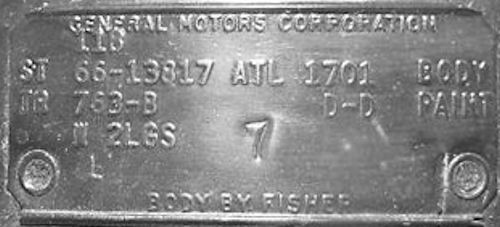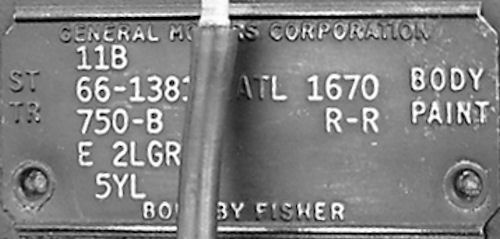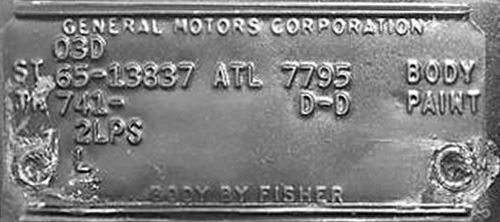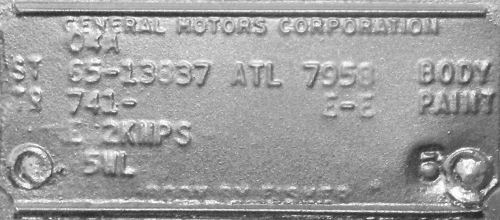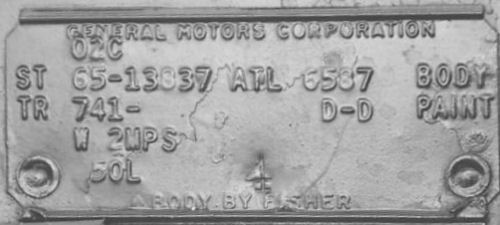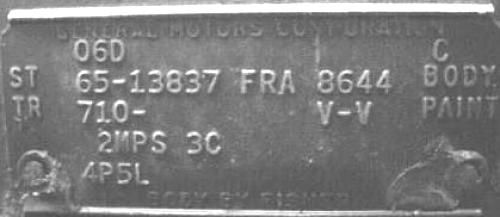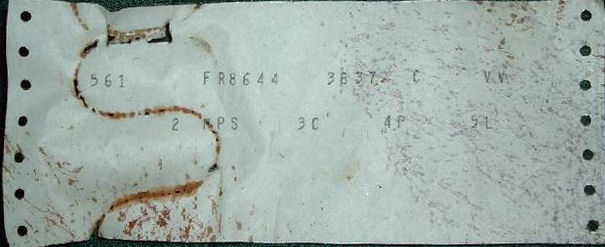Have to disagree here with Warren. The "L" on 1966 Atlanta tags is only found
until late March of 1966 then it disappears. Prior to that it does appear but, just as often than not, it appears by itself without a group 5 designation and when it does appear with a group 5 designation it follows 5Y which is deluxe belts.
In 64 the letter V was used through early January to denote RPO A37,
Seat belt equipment, and W was used thereafter to denote RPO A39 deluxe seat belts. The letter V was not used after early January as seat belts became standard equipment.
Revised January docs show seat belts as standard equipment in all 1964 Chevelles. I can only conclude that since seat belts became standard equipment the option (RPO A37) and its need to put on trim tags.
Production numbers from Tailfins and bowties show RPO A37 discontinued in February and it sold 55,710 units out of a possible 149,046 Chevelles - presumably the number of Chevelles sold up to the point they became standard. I assume 149,016 is the number of Chevelles to that point since 353,234 Chevelles were sold in 1964.
As for 1965 since seat belts were now standard, only the deluxe belts needed to be coded on the trim tag when ordered with the letter W in group 5 like it would remain until group option coding was eliminated from tags in 1968. As in 1966 the letter L may appear on the last line of the tag by itself (no group letter) or it could follow 5W.
I do tend to go with the theory that 5OL coding could very well be "less seat belt" (or seat belt delete if you like) since that option (RPO A62) was available in 1965 and 29,864 people went for it and got an $11 credit.
1965 Framingham may be another story. This L appears on all 10 tags I have examples of from Framingham. And it appears not by itself but always after group option number 5, sometimes 5L and sometimes 5WL but never by itself as it often did with other plants. I also have an interior trim sheet for Framingham showing the L in group 5. Framingham appears to have other codes on their tags that other plants did not always use so I'd take them more as a
non-conformist and not use them as true examples for other plants.
 ) also is there a way to tell from this tag what hubcaps would have originally come with this car? (see my post under new members for more info about that) Thanks so much!
) also is there a way to tell from this tag what hubcaps would have originally come with this car? (see my post under new members for more info about that) Thanks so much!




